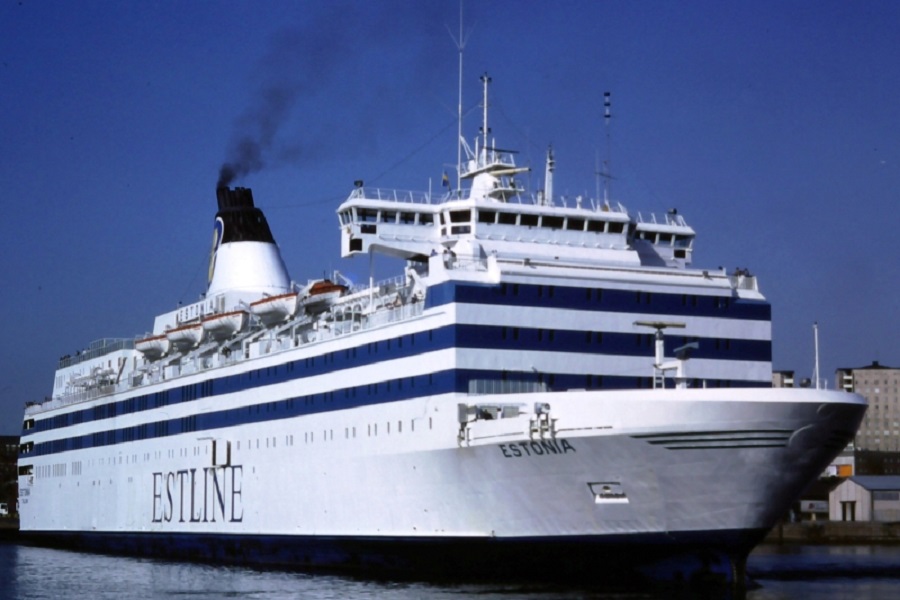Two unrelated discoveries place a strong question mark on the cause of the sinking of MS Estonia and one of them – by a Swedish expert group – does not rule out an explosion; the Estonian-Swedish ferry sank exactly 27 years ago, on 28 September 1994.
An independent Swedish research group, called Fokus Estonia, on 28 September presented its study into the disaster. According to the study, MS Estonia could have sunk after suffering an explosion that tore the ferry’s bow visor off.
The group’s experts examined MS Estonia’s recovered bow visor – stored at the Muskö Naval Base near Stockholm – and claimed that a piece of the visor’s metal they tested had detectable traces of temperature, which had to reach at least 1,200 degrees Celsius (2,200 degrees Fahrenheit). This indicates an explosion, the group said.

The bow visor was a key element in the official accident investigation from 1994-1997. The official disaster report, released in 1997, said the fatal event started when the locks on the ferry’s bow door failed from the strain of the waves and the door separated from the rest of the vessel, pulling the ramp behind it ajar. This allowed water into the vehicle deck, capsising and ultimately sinking the ship.
The Fokus Estonia study now places a strong question mark on the official report.
Fokus Estonia is led by a former Swedish MEP, Lars Ångström, while the group’s experts include Anders Ulfvarson, a professor emeritus of marine structural engineering at Chalmers University of Technology, and Ida Westermann, an associate professor at the department of materials science and engineering at the Norwegian University of Science and Technology.
The ferry’s steel structure is bent outwards
In a separate development, the Swedish Radio on 27 September published on its website a footage (the radio called it a “classified film”), taken by the official accident investigation authorities of Sweden and Estonia, that shows how pieces of MS Estonia’s steel structure are bent outwards from the hole in the ferry’s hull.
The footage, released by the radio, is the most graphic yet of the videos released publicly so far.

Simultaneously, a private Estonian-led expedition, initiated by the close relatives of the people who died in the sinking of MS Estonia, has started examining the wreck of the sunken ferry.
A deadly sinking
MS Estonia was a 16,000-ton, 157 metres-long (515.16 ft) cruise ferry, built in 1980 at the German shipyard Meyer Werft in Papenburg. It sailed as Viking Sally (1980-1990), Silja Star (1990–1991) and Wasa King (1991–1993), before named Estonia. The ferry, at the time the largest ship under the Estonian flag, began serving the Tallinn-Stockholm route in 1993 and was operated by the Swedish-Estonian shipping company, Estline.
While on a scheduled crossing from Tallinn to Stockholm on the night of 28 September 1994, the ferry sank in the Baltic Sea. The vessel disappeared from the radar screens of other ships at around 01:50 EEST (less than half an hour after the first Mayday call was issued at 01:22 EEST) in international waters, about 22 nautical miles (41 kilometres) from the Finnish island of Utö.

The ship sank to the depth of 74 to 85 metres (243 to 279 ft) of water.
Of the 989 on board, only 138 were rescued alive (one of whom died later in hospital). As such, it is the second-deadliest peacetime sinking of a European ship, after the RMS Titanic, and the deadliest peacetime shipwreck to have occurred in European waters, with 852 lives lost. Most of the victims were Swedes (501), followed by Estonians (285).
Cover: MS Estonia in 1994.

